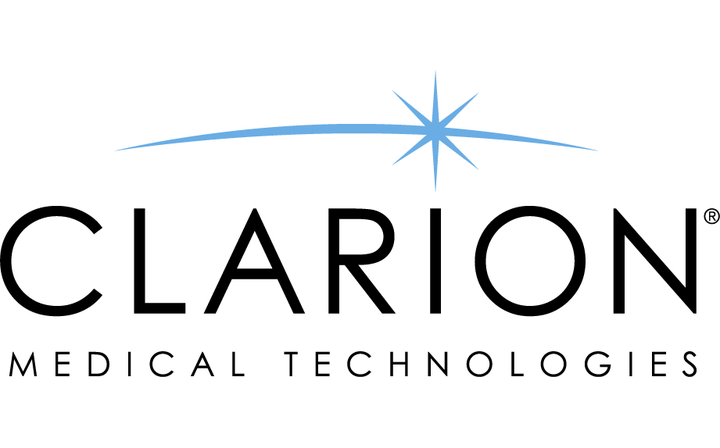Coping with macular degeneration means getting creative. There’s no single best macular degeneration aid for everybody. You may want to try several visual aids for macular degeneration to see which one(s) works best to help your vision.
Magnifiers
Low-vision magnifiers are the most common type of aid for macular degeneration. Small magnifiers are easy to use and can suit any purpose, including watching TV, putting on makeup or reading.
You’ll find various macular degeneration aids for low vision, including small pocket magnifiers and full-page magnifiers. Like most products, magnifiers vary in size, price, and quality. As a non-prescription product, do your research to find a suitable magnifier for your needs.
Closed Circuit Television (CCTV) Magnifiers
CCTV systems combine a camera and a television screen for macular degeneration patients. Point the camera at an object, and the magnified image will appear on the screen.
Look at the screen and use the image to work or enjoy your favorite activities in real-time. Like magnifiers, a range of CCTV systems is available. Many of the leading CCTV systems can even broadcast images in 4K.
Electronic Reading Tools
Reading can be incredibly challenging for people with macular degeneration. According to one study, slower reading speeds occur because patients become increasingly reliant on their peripheral vision. While you may be tempted to give up on reading entirely, there are aids for low-vision macular degeneration to maintain your reading abilities.
Electronic reading tools can help by increasing the font size, font type, and contrast between the page and the words. Most modern eReaders already contain these standard features, making it easier to enjoy your favorite books.
Low-Vision Optical Lenses
Ordinary eyeglasses can only take you so far as macular degeneration advances with age. Technology advancements have led to the development of different types of optical lenses to combat the condition. There’s no need to allow poor vision to stop you from living your life to the fullest.
Depending on the extent of your condition, you may find certain types of eyeglasses more valuable than others. Here’s a breakdown of the most common low-vision optical lenses.
Bioptic Telescopic Glasses
Bioptic telescopic glasses, also marketed as bioptic lens systems, combine a telescope with two optical lenses. These telescopes are affixed to the glasses’ lenses to boost your vision.
Bioptic macular degeneration visual aids allow you to see objects at a distance. The most common uses for these lenses include reading signs, recognizing faces, and watching television.
Low-Vision Magnifying Reading Glasses
The versatility of an eReader is unmatched, but not everyone likes looking at a screen to read. If you prefer to read print in physical books and newspapers, you need an alternative tool.
Low-vision magnifying reading glasses act like an eReader because they magnify the font to make it simpler to consume.
Prismatic Eyeglasses
Prismatic eyeglasses are similar to low-vision magnifying reading glasses, only stronger. These extra-powerful reading glasses offer a natural focal point that takes the strain off your eyes.
Prism glasses can help with an issue like double vision, assisting both eyes to focus on the same image. If you suffer from a more severe form of macular degeneration, prismatic eyeglasses can be a helpful reading aid.
E-Scoop Glasses
E-Scoop glasses are an advanced form of optical lens combining five unique characteristics to support your sight. These include:
- Increasing image size
- Improving contrast
- Enhancing light exposure
- Bolstering comfort
- Improving vision
Unlike some of the other low-vision aids for macular degeneration on this list, E-Scoop glasses are designed to be worn constantly.
E-Scoop glasses are a long-term vision aid because they can be recalibrated to match your changing vision. Do remember that even this advanced technology has its limitations. They cannot restore your vision or combat advanced macular degeneration.
Binoculars/Telescopes
While binoculars and telescopes are not distinct optical lenses, they are an add-on you can mount to your glasses. Attaching telescopes or binoculars can temporarily change your vision if you struggle to see things at a distance.
These compact binoculars or telescopes can allow you to visit a museum, read menus, go to the theater or attend a sporting event. The strength of these additions can be tailored according to your current vision strength.
OrCam
OrCam is another next-generation low-vision aid developed to change how you perceive the world despite low vision. It is attached directly to your eyeglasses and connects to a larger device via a cable.
The OrCam is barely noticeable and utilizes artificial intelligence to support people with visual impairments to recognize faces, read books and more.
Additionally, OrCam has been used to help people who are blind by seeing on their behalf and speaking to them. For example, OrCam can read supermarket barcodes to tell you which product is in front of you.
IrisVision
Wearable devices powered by artificial intelligence are fast becoming the next frontier of vision aids for macular degeneration. IrisVision goes one step further by incorporating virtual reality technology.
IrisVision provides a 70-degree field of vision to allow you to perceive the world fully and clearly. Currently, the only disadvantage of IrisVision is that it remains a static device. You cannot move around while wearing it. But it is fascinating because it includes several viewing modes, allowing you to switch between each. Whether you need scene mode for admiring a landscape or TV mode for watching your favorite show, a click of a button will help you see everything clearly.
Supplements
Aids for macular degeneration provide vital support to your vision as you age. Evidence has shown that supplements can slow down macular degeneration progression, and reduce symptom severity in many patients. There are high-quality supplements that offer important benefits to eye health and improve overall health, making them an excellent addition to your diet.
Low-Vision Lamps
Light is essential for supporting someone with macular degeneration. Over time, yellow deposits in the eye, known as drusen, gradually cause light-sensitive cells within the macular to thin and die.
High-quality lighting can compensate for some of your central vision loss, whether you have the dry or wet form of age-related macular degeneration. It also reduces eye strain and eye fatigue. Ordinary options lack the control to set the light just right for your vision. Specialized low-vision lamps can control the light’s color, brightness and direction.
Low-vision lamps can also make your other aids for macular degeneration, such as video magnifiers, magnifying glasses, and CCTV systems, more effective. Some low-vision lamps are designed to be portable, so you can easily carry them from room to room as needed.











